Dr Vino's wine blog
wine talk that goes down easy
Which reds would you cellar beyond Bordeaux?
With all the hype about the Bordeaux campaign to pre-selling their 2010 wines, it made me think: surely there are more affordable, just as age-worthy alternatives out there. Here are five current releases I would cellar for 15 years that will bring a whole lot of bang for much less buck:
Domaine Baudry, La Croix Boisée, 2008. Cabernet franc grown on limestone from a top grower in Chinon. And around $30 a bottle? I would sign up for a case faster than I would a 375ml of 2010 Lafite–and I’d probably save money if I did.
Clos de la Roilette, cuvée tardive, 2009: Granted, this wine is mighty hard to find now, but it is worth seeking out. A Fleurie from the edge of Moulin-a-Vent, this is more pinot-like than gamay, structure and elegance over fruit and ebullience. I have a case and plan to age at least half of it for a decade.
Napanook 2007 cabernet sauvignon: This wine’s list price is about $50 but I’ve seen it online as low as $35. Even though it is the “second” wine from the Dominus estate, it has the seductiveness of good cabernet. And the fact that it comes from the Napanook estate under the hand of Christian Moueix gives it a track record of success.
Produttori del Barbaresco, Barbaresco, 2006: This excellent nebbiolo can age (the 1978 is drinking well today, apparently). It sells for under $30.
Isole e Olena, Cepparello 2006, about $60: I had the chance to try this wine at a tasting last year and thought it was terrific. I don’t have a lot of experience with aging sangiovese, but if I were going to, this is where I’d start.
And, of course, for the prices Bordeaux futures are fetching, you could get plenty of Bordeaux with a decade or two of cellar age on them. There’s slightly more risk with the provenance, but the rewards come a lot sooner than pre-release Bordeaux since the pleasures of older wines can be had immediately. Or, as we recently discussed, there’s always Lopez de Heredia.
I was discussing this topic on email with a site reader who is a Spanish wine buff. He offers his suggestions from Spain after the jump. What are your suggestions for age-worthy alternatives ?
Three cask monte, Bordeaux 2010, Bosnia – sipped & spit
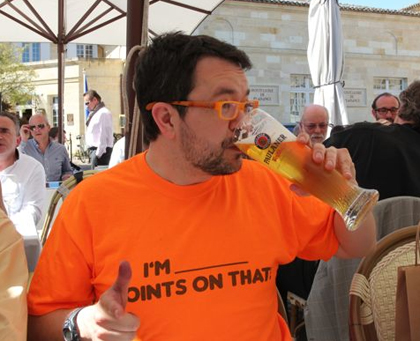
SIPPED: the zany
Hardy Wallace (above) dropped in on the en primeurs tastings and handed out his scores ranging from 101.00 to 102.36 points in .17 point increments. He gets the award for best T-shirt! [Dirty South Wine]
SIPPED: three cask monte
Jancis Robinson provides a primer in the various ways that samples at the en primeurs tastings can be manipulated to show their best.
SIPPED: discrimination
Wendell Lee, general counsel at the Wine Institute, provides a further look into insidious nature of the apparent simplicity of HR 1161, a bill that would drastically affect wine shipping by reverting to regulations that pre-date Prohibition and supersede the Commerce Clause. [ShipComliant]
SIPPED: branding
The Food Network releases their own branded wine. Only question: do you drink it with food, or with TV (if at all)? [Eater]
SIPPED: peace
Serbs and Croats beat their swords in to pruning shears at a winery project in Bosnia. “Working in a vineyard is like therapy, it helps a lot (to forget about the war).” [Reuters]
Scientist discovers way to pre-score Bordeaux 2011 vintage
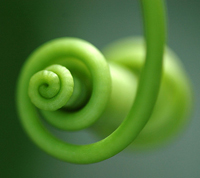 A French scientist has determined a way to evaluate the quality of the next Bordeaux vintage–vintage 2011, that is.
A French scientist has determined a way to evaluate the quality of the next Bordeaux vintage–vintage 2011, that is.
Jacques Meganote, a researcher at INRA in Bordeaux, has collected samples from the tendrils the vines in the region have shot out already this year. Using a complex blend of mass spectronomy, DNA analysis, carbon dating, and weather history, he is able to forecast the quality of the vintage that has yet to be harvested–in fact, the vintage that has yet to grow a grape. The program is called “Bordeaux shoots and scores.”
“We are certain to 99% level that our forecast is accurate,” Meganote said. “We have been collecting it privately for five years now and this is the first time we have released the data.”
After two vintages widely praised, the Bordeaux wine trade will doubtless like his forecast for Bordeaux 2011.
“The concentration in the berries will be superb. This looks like a vintage that possesses both power and elegance. It will be a vintage of the century. Truly, a 99 point vintage.”
The next step in the program will be to pre-score individual wines.
Should critics embargo Bordeaux 2010 scores? #jancis
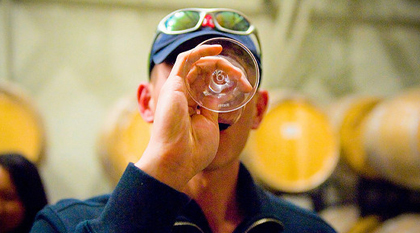
Jancis Robinson floated a novel idea on her website last week: what if critics, who descend on Bordeaux shortly to taste 2010 barrel samples, withheld their scores until the Bordeaux trade had finished their pre-sale campaign (known as en primeur)? The logic is that high scores for what is already an extremely hyped vintage would only drive prices higher.
Predictably, Robert Parker of the Wine Advocate and Tom Matthews of Wine Spectator poured cold water on the idea, as republished on Jancis’ site. Given that this is a classic prisoner’s dilemma, if Jancis admirably remains silent while other critics publish, it only hurts her since she loses influence. The embargo would only work if all critics agree to remain silent, which is not tenable in the real world, where there’s an incentive for each critic to publish first, getting his or her views circulating, and driving the discussion. Suckling often did that when he was at Wine Spectator getting in to tastings before the crowds of the en primeurs tastings and publishing his report more or less immediately (Parker’s report usually comes out after en primeurs, at the end of April).
Although it’s unworkable, would an embargo from critics serve to bring en primeur prices down? Perhaps, especially in less anticipated vintages such as 2008, which was also being pre-sold during an economic meltdown. Although still an important part of the Bordeaux sales machine, critics’ scores may not as important as brands themselves as this Liv-Ex analysis shows.
Sideways in Japan, $20 Champers, Bordeaux takes on the world! – sipped & spit
CHUGGED: Pinot?
If you missed the Japanese remake of Sideways, check the trailer above. Glad the dump bucket scene was included! For more details, check out the Wine Economist’s post who says that they changed several key plot details, notably making it a paean to Cabernet, not Pinot.
CONQUERED: world wine bars
The Bordeaux wine trade unveils a plan to boost sales of lower priced wines from the region. A part of that is opening wine bars selling only Bordeaux in London, NYC and Hong Kong. I can hear the dust falling in the NYC one already! [theaustralian.com.au]
SIPPED: bargain bubbly?
Champagne under $20? A blogger explores who makes the Kirkland Champagne at Costco ($19.99). [Goodcheapvino.com]
SIPPED: honey laundering
Off topic, but check out this fascinating story about fraud in the world of honey. [Globe & Mail]
Cuvee 88888888 – the ultimate Bordeaux 2008!
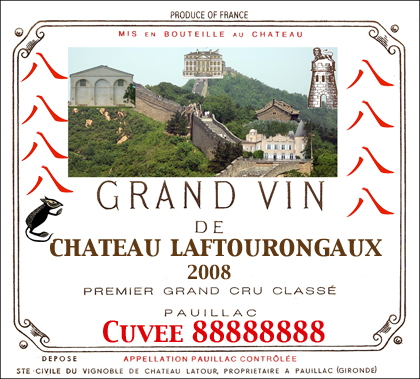
Chateau Lafite-Rothschild added the Chinese character for “8” on their 2008 bottles. Mouton-Rothschild added a painting by a Chinese artist to their 2008s. What could the Bordelais do next?
Behold: Cuvée 88888888, the Grand Vin from the Premier Cru Classé, Chateau Laftourongaux!
Thanks Beijing Boyce and Jean-Luc for the suggestions!
Chinese label art for 2008 sends Mouton prices soaring
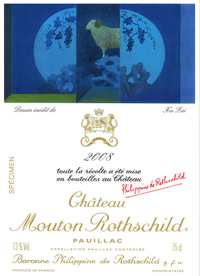 First, Lafite announced that the mandarin character for “8,” considered a lucky number in China, would appear on bottles of their 2008s.
First, Lafite announced that the mandarin character for “8,” considered a lucky number in China, would appear on bottles of their 2008s.
Now, Mouton has announced that art by the Chinese artist Xu Lie will adorn their 2008 labels. The signature Mouton ram is sandwiched between two halves of a moon adorned with grapes.
According to decanter.com, prices of the wine were £1,800 a case last fall before the rumor of a Chinese label. Now, they say, prices are £6,000 per case (about $10,000; a search wine-searcher free version yielded only results for Mouton-Cadet).
Who’s pulling the wool over whose eyes?
Daniel Johnnes, Burgundy man, now imports Bordeaux
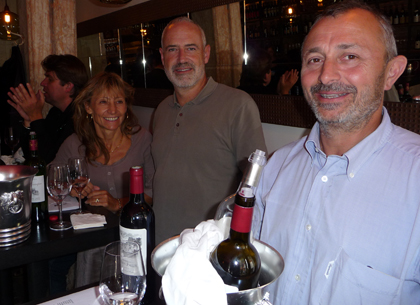
Above РPatricia and Pierre Bernault from Chateau Beaus̩jour whose wines are now available in the US market for the first time as of five days ago. On the left, Pascal Collotte of Chateau Jean Faux.
Enthusiasts of French wine often either love Burgundy or Bordeaux. For Daniel Johnnes, who imports many Burgundies as well as organizing the annual celebration of fine and rare Burgundy known as La Paulée, it’s pretty clear where his allegiance lies. The only catch: he’s just started importing Bordeaux.
I stopped by his tasting on Tuesday at Terroir Tribeca where the handful of new wines he’s importing were on display. Of note, the charismatic vigneron Pascal Collotte makes a solid red (merlot-cabernet franc) and a rosé from his 30 acres in the Entre-Deux-Mers region; The Bernaults, of the 30-acre Chateau Beauséjour in Montaigne-Saint-Emilion, make a merlot-cabernet franc blend from 45 year-old vines.
 Here’s how Johnnes (right) describes his new venture, sourcing Bordeaux from outside the traditional négociant system.
Here’s how Johnnes (right) describes his new venture, sourcing Bordeaux from outside the traditional négociant system.
“My goal was to break away from the pack that is bashing Bordeaux. The cool thing now is to love natural wine from the Loire. I’ve seen some sommelier friends do high fives over the fact that neither one has been to Bordeaux. But not all natural wines from the Loire are good, just as not all Bordeaux wines are bad.
These Bordelais are small growers, with a similar respect for the land as in Burgundy. They act as minimally as possible: the wines are unfiltered, low yields, with minimal handling and sulfur.
That’s hard, especially at these prices–you’re not going to get this level from California at this price ($12-$30).
I’m not going over to the dark side, I’m just saying “open your eyes and keep an open mind.”



